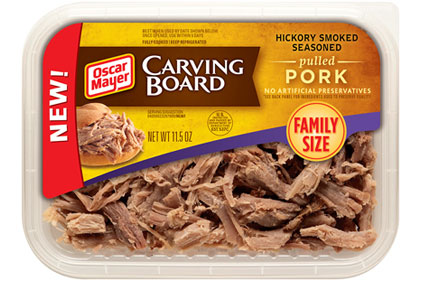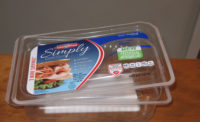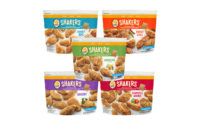 Consumers love reclosable packaging. Reclosability protects freshness. It’s also convenient because there’s no need to transfer remaining portions to another receptacle for storage in the refrigerator, freezer or pantry.
Consumers love reclosable packaging. Reclosability protects freshness. It’s also convenient because there’s no need to transfer remaining portions to another receptacle for storage in the refrigerator, freezer or pantry.
With reclosability firmly entrenched as a value-added feature, brand owners have a constantly expanding choice of tubs/bowls/clamshells with friction-fit lids, flexible packs with conventional or slider zippers, and pressure-sensitive adhesive-based options. Designs often incorporate easy-open features and tamper-evident devices. Many offer sustainability and cost benefits.
Tubs with friction-fit lids protect the shelf life of ready-to-eat products such as sliced lunch meat in easy-open pouches. Consumers frequently save the tubs to hold leftovers or products transferred from non-reclosable packaging. If made of polypropylene (PP), the containers and lids are not only dishwasher-safe, but also microwave-compatible.
A lower profile pack, consisting of a tray, peelable lidstock and overlid, eliminates the primary pouch generally seen with tubs. On initial opening, the consumer removes the overlid and peels away the lidstock. After removing the desired portion, the overlid is pressed back into place to reclose the tray. Although normally made of PP (tray and overlid) and polyethylene terephthalate (lidstock), other resins may be specified. A variety of sizes are available, and designs can be configured to hang, stand, lay or stack.
Somewhat larger thermoformed clamshells or trays with friction-fit lids hold hot or cold prepared foods such as rotisserie chicken, fried chicken, chicken nuggets, turkey pieces, whole or sliced ham, slabs of ribs, popcorn shrimp or crab legs. If desired, these containers may be specified to withstand heating in the microwave or conventional oven. Recently introduced designs replace some petroleum-based virgin PP with calcium carbonate. The chemically inert filler reduces the pack’s carbon footprint and enhances mechanical properties.
Lightweight, reclosable pouches offer another environmentally friendly option for prepared foods and are popular for frozen seafood such as vacuum-packed fish fillets or shrimp.
“The pouch format is also a widely used packaging option for pre-sliced lunch meats,” according to “Meat, Poultry & Seafood Packaging, U.S. Industry Study with Forecasts for 2015 & 2020”. The report, published in 2011 by The Freedonia Group, Inc., Cleveland, Ohio, is currently being updated and slated for publication in mid-2013.
Pouch reclosure generally relies on a zipper or pressure-sensitive adhesive. Zipper designs have evolved from single-track press-to-close profiles to multi-track options. Adding one or more tracks make it easier to align and close the zipper and enhances product protection. Zippers can be specified on premade pouches or applied inline on many form/fill/seal machines. Most zipper-equipped packs include a tamper-evident device, such as a tear strip, that must be removed to gain access to the zipper and product.
A popular variation, the slider, opens and closes by moving a tab from one end to the other, similar to the way a zipper on a jacket works. One of the latest refinements of this design reduces the size of the tab to conserve resin.
Pressure-sensitive adhesive reclosures often feature a pull-strip. In one design, the pull-strip opens the pack and exposes the adhesive. To reclose, the top of the pouch is folded over and pressed against the adhesive strip. With smaller dimensions than a conventional pouch, the foldover design improves product-to-package ratio, delivers more product per pallet or store shelf and offers the potential to reduce carbon footprint and material costs.
A similar design turns the pull-strip into a resealable access panel on a pouch or on lidstock for a tray or formable bottom web. To open, the consumer grabs a corner tab and lifts the peelable section. After product is removed, the pack reseals by pressing the film back into place. Options include barrier films for modified-atmosphere packaging as well as breathable and anti-fog materials.







Report Abusive Comment